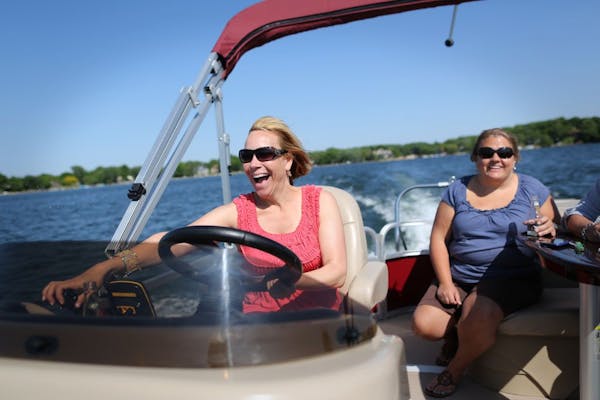You needn't pay very close attention nowadays to share the notion that, rather than pressing ahead determinedly toward some good end, following a plan, we, as a people, lurch instead from crisis to crisis, unsure exactly where we're headed, and less so where we'll end up.
This is particularly true in matters of the environment, not least the transformation, ongoing, to marginal croplands of the nation's last best grasslands and the Dakota ecosystems they support, the alterations enriching a relative few at great public expense, and cost.
An attempt now to still that process and preserve some of these irreplaceable lands, and with them critical components of the nation's natural heritage, is caught up in a congressional conference committee whose main charge -- go figure -- is deciding how much will be spent on roads and bridges.
At issue are two versions of a federal transportation bill, one passed by the House, the other by the Senate, the latter better by half, measured by what good it could do not only for yellow warblers, least flycatchers, eastern phoebes, ducks, pheasants and other prairie wildlife, but also for the health and long-term stability of the Dakotas -- held together as they traditionally have been by vast expanses of big bluestem, Indian grass, western wheatgrass and sideoats grama, among other grasses and grass-like plants.
Some background:
The Land and Water Conservations Fund (LWCF) was created by Congress in 1965. Its intention was to employ a portion of revenues gained from the sale of offshore oil and gas leases to pay for natural resource conservation and outdoor recreation nationwide, including state, local and national parks and trails.
Revenues diverted to the LWCF for these projects were supposed to total $900 million annually. But that has rarely happened. Instead, Congress has leeched most of the cash each year for other purposes. Since 1965, some $17 billion has gone missing.
Now a conversion of interests hopes the Senate's transportation bill triumphs over the House's in key ways as the conference committee assigned to resolve differences between the two races to finish its work. A final bill must pass both chambers and be signed by President Obama by the end of the month, when authorization under the current transportation law runs out.
Unmentioned in the House bill is the LWCF. But the Senate funds it at $700 million in each of the next two years, with the money destined for conservation projects nationwide. Among them, the Obama administration has assured, will be the Dakota Grasslands Project, whose goal is to preserve, primarily through conservation easements gained from willing landowners (of whom there are hundreds waiting), 240,000 acres of wetlands and 1.7 million acres of grasslands.
Everyone in the conservation community supports the plan, chief among them Ducks Unlimited, which has committed $50 million over the next 10 years to the grasslands project, provided reasonable allocations from the LWCF are made. Also lining up to help, cash in hand, are The Nature Conservancy, Pheasants Forever and other groups.
But much bigger forces -- the massive construction-industry lobby and election year politics, to name two -- are in play as a final bill is shaped that could spend more than $50 billion a year.
Including the LWCF portion in any final measure should be a no-brainer. The money is already paid into the fund by oil and gas leases, and the needs are many, not least reclamation of the Gulf Coast after the BP spill, which also is included, via a separate component, in the Senate bill.
It's possible something good might happen soon. Or not: House negotiators might dig in their heels on these and other conservation and environment portions of the two bills, and no bill will be agreed upon, with the current law extended instead.
Should that occur, bigger crises surely await, the even more costly future reclamation of these lost Dakota prairies among them.
Dennis Anderson • danderson@startribune.com
Anderson: Anglers protesting tough new Mille Lacs rules are wrong

Anderson: Courts, not politicians, should rule on Red Lake, White Earth lands

Anderson: Multimillion windfall gets invasive carp deterrent moving
![A young whitetail deer searches for food as another blanket of snow coats the arrowhead. ] Minnesota -State of Wonders, Arrowhead in Winter BRIAN PETE](https://arc.stimg.co/startribunemedia/WK32UWWY6FKNWJUIYCJ6ZPT4AU.jpg?h=91&w=145&fit=crop&bg=999&crop=faces)
Anderson: In NE Minnesota, DNR staff, habitat and deer all decline


